How to build a minimum viable product (MVP) – A step-by-step guide
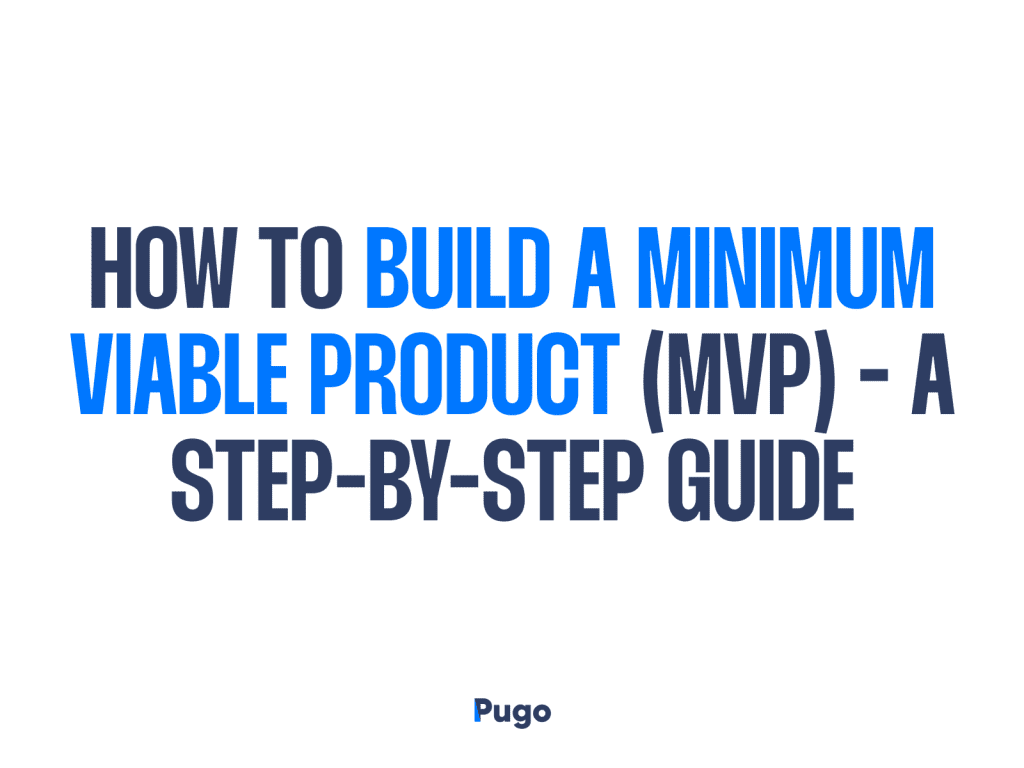
Let’s chat about how to build a minimum viable product (MVP) – Your step-by-step guide
So, what’s an MVP – Minimum viable product?
Here’s the lowdown on how to build a minimum viable product: An MVP (Minimum viable product) is like your product’s baby version. It’s got just enough features to work and to show people what it’s all about. The really cool thing about an MVP is that it lets you get your product out there faster, get people excited about it, and start figuring out if it’s what the market wants.
An MVP, or a minimum viable product, is your product’s starting point. It’s got a few super important features that help you answer 3 big questions:
- Do people want your product?
- Does it solve the problem?
- Can you make money from it?
The phrase ‘minimum viable product’ has been around since 2001. Frank Robinson, the CEO at SyncDev, along with entrepreneurs Steve Blank and Eric Ries, were the ones who came up with it while they were working on Customer Development and Validation. MVP is a pretty good way to describe a product that you’re testing out to see how the market reacts to it.
Think of the MVP as an experiment to see if your business ideas are going to fly or flop. Testing out your assumptions helps you figure out whether your business idea could make you money. This is super helpful for new companies and startups because it helps you identify business opportunities instead of just diving headfirst into a business model without knowing if it’ll work or not.
Michael Seibel, the CEO of Y Combinator, probably described an MVP best when he said, “Hold the problem you’re solving tightly, hold the customer tightly, hold the solution you’re building loosely.”
After you launch your MVP, you sit tight and wait for that initial feedback. Based on what people say, you can go back and fix any issues and add new features that those early users suggest.
So, that’s the scoop on how to build a minimum viable product.
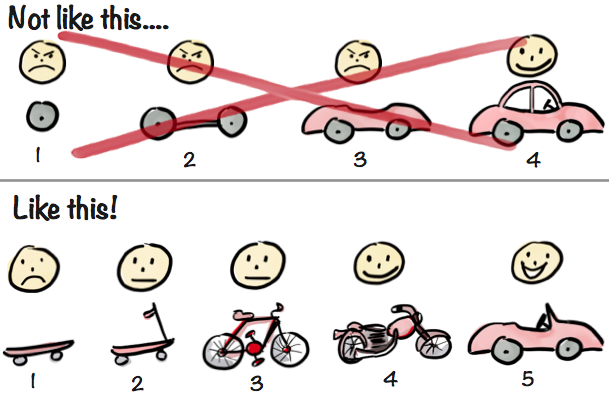
Why we dig MVPs?
Think of it like this, you can’t build a killer pad without laying down some solid groundwork first. That’s what an MVP is all about. It’s about starting small, giving it a whirl, and then deciding if we need to shake things up and go a different way, or if we’re onto something and should turn it into a full-blown product.
MVP in a nutshell:
Here’s the lowdown on what we’re trying to achieve with an MVP:
- Getting a head start in the market – Who doesn’t love a good head start, right? It gives us that competitive edge.
- Testing whether our product has got the chops. Need to see if your brainwave is actually a winner but not sure where to start? Developing an MVP is like giving your ideas a test run to see if they’re a hit with the peeps. To get the ball rolling, we’ll start with a list of basic features to weave in. (This also lets us get real people to take it for a spin and see if it’s ticking their boxes)
- Keeping our wallets happy by spending less on product development. By zeroing in on just the need-to-have features, we’re cutting down on costs and saving some moolah. So, if you’re watching the pennies, figuring out “how to develop a Minimum Viable Product” is a no-brainer.
- Working our way up to a fully-loaded product that’s been fine-tuned with user feedback and suggestions
- Speeding up the delivery of a product that at least solves one problem for users. When we’re working on an MVP, we’re not just saving time and money, we’re also striving to create a solution that tackles a problem for our users (or at least, one of their problems).
Why MVP Design is Your Business’s Best Mate
So, MVP Design is pretty much the superhero of any app. It can either get your users super excited or save your business from a total faceplant. Let’s break down the superpowers of MVP one by one.
Here’s what you get when you go for MVP:
- A sneak peek into your customers’ world
- More bang for your buck (Budget-Friendly)
- A bait for investors
- A faster way to get your app out there
- Early bird testing perks
A sneak peek into your customers’ world
The faster your product lands in the hands of your users, the quicker you get to hear what they think. So, you get to understand the market and build your MVP based on what you’ve learned. And because the MVP codebase is small, it’s super easy to do.
Also, if people jump on board with your project, you can be sure that the features you’re offering are hitting the mark and they’re keen for more. If something’s not quite right, you can ditch the project and cut your losses without it hurting your business too much.
More bang for your buck (Budget-Friendly)
One of the best things about starting with an MVP is that it’s kind to your pocket. It lets you test out your idea before you throw all your money at something that may not fly.
Research shows that, in 2017, the mobile app market grew heaps. But out of the gazillions of apps on the play store and iOS store, only a few actually get downloaded because of dodgy user interfaces and poor performance. That’s why it’s a good idea to start with an MVP. It’s a smart way to up your mobile development game.
A bait for investors
If you’re hunting for funding for your startup, an MVP can be just the thing to hook investors. It’s a win-win because they don’t have to wait too long to see results.
A faster way to get your app out there
Building an MVP can help you figure out what features and functions are essential for your product and plan your budget for the build. This way, you can calculate the cost of creating a full-blown product and get it launched faster than your rivals.
Early bird testing perks
One of the best things about MVP software is that it lets you test your concept. If you launch an app with a whole heap of different features, it’s going to be harder to tailor it to your target audience. Plus, you’ll end up having to ditch features you’ve already paid for.
With an MVP, you’re only dealing with a few features. If your customers love these, you can then offer new ones based on their feedback. This way, you can add more functionality without blowing your budget like you might with a full-scale software.
Your Step-by-Step Guide to Building an MVP
So, you wanna build a minimum viable product (MVP)? Cool!
The main goal of an MVP is to create a product that does the job and provides immediate value, quickly, all while keeping costs low. Start with an MVP and you get a sneak peek into your end-user’s world and the market you’re hoping to dive into. This MVP also sets the groundwork for future development and helps clear up what steps to take next — whether that’s changing directions entirely or continuing down your planned path. Sometimes, an MVP can even be used to win over stakeholders. Whether you’re looking for a thumbs up from internal or external investors, an MVP definitely beefs up your position and secures funding for future development.
Alright, let’s break down the steps to creating an MVP and chat about what happens at each stage.
Building an MVP isn’t that different from general software product development. The steps are pretty much the same, but the speed and goals can vary.
We’re here to guide you through the MVP creation process and help you dodge any pitfalls.
Identify Your Problem
First things first, what’s the problem you’re looking to solve? Write it down and with an MVP, test out its feasibility. It’s super important to validate your idea without development to save resources and make sure there’s actually a need for your solution. Being a pro in the industry is helpful, but you still gotta check if the problem you wanna solve is a real thing.
Do Your Market Research
Next up, it’s time to snoop around the market. Conduct your market research, scope out the competition, pinpoint your target audience, and calculate the market size. Running out of cash is a common reason why young startups fail. You gotta be sure that people are willing to spend their hard-earned money on your product and that there are enough of them to keep going.
Get the Picture
So, you’re thinking about building an MVP? Cool! First things first, you gotta know your project inside out. Ask yourself these questions:
- What sort of problems can my platform sort out?
- Will it make a difference for the folks using it (and how)?
- Why on earth would they opt for this solution?
Plan the User Journey
Remember, your app is for your users, not just you. So, put yourself in their shoes. Imagine the steps they’d take from opening your app to, say, buying something. This way, you can make sure your app is user-friendly right from the get-go.
Here’s What to Keep in Mind When Planning a User Journey:
- Know Your Users
Who’s gonna use your product? You might have more than one type of user. Let’s say you’re planning a service appointment booking app. You’ll have the person booking the appointment and the service technician.
- Identify The Steps (The Jobs)
What does your user need to do to reach their goal? When you’re planning your MVP, you might wanna focus on the user with the most steps. But hey, priorities change. You might need to shift focus to a different user or even juggle multiple users.
- Plot The Story Endings
Each user has a goal (like booking an appointment). That’s their story ending.
Here’s an example of how you might map out a user journey:
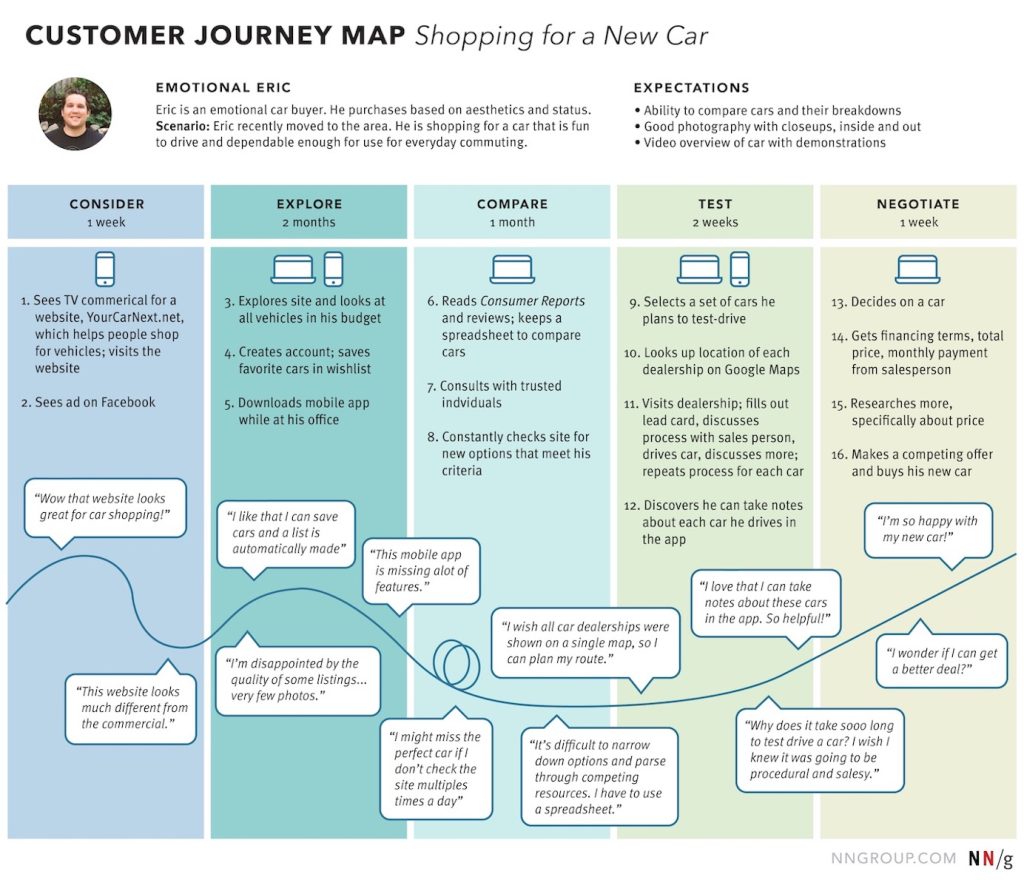
Let’s Make a Pain And Gain Map, Shall We?
Alright, after you’ve sorted out the user flow, it’s time to whip up a pain and gain map for each action. This nifty little thing helps you spot all those pesky user pain points and the sweet gains they get when you fix ’em. The cool bit? You’ll see where you can really make a difference. That way, you can focus your MVP on these areas and toss the less important ones onto your product roadmap for future releases.
Time to List Out the Features
Like we said before, you can’t build a product that folks need without having a chat with ’em. Can’t stress this enough – gather feedback like it’s going out of fashion, especially during MVP product development. Based on what your future customers have to say, start drafting a list of crucial features for your MVP and build a roadmap around it.
Now, you’ll be able to see what features should make the cut for your MVP, and which can take a backseat on your product roadmap. Here are some tools to help you decide what’s necessary for your MVP’s success. Remember to ask yourself, “what does my user want vs. what does my user need”, to help figure out and prioritize features. But hey, don’t go overboard with user-requested features too soon, you don’t want to spoil the user experience or lose sight of the product’s main goal. Only include features that align with your product’s overall aim.
- Opportunity Statements
These can help finalize what features you wanna build. During this stage in the MVP development process, you’ll want to create feature sentences. Say, for our pet-loving folks applying to adopt animals, the opportunity statement “How might we speed up the application process?” could turn into “Let’s cut down application processing time by 10 percent.”
- Breakdown Features To Include In Your Product Roadmap
Jot down the user and the specific opportunity statements, and give a breakdown of the features to include in the product roadmap.
- Prioritization Matrix
This step’s a lifesaver when you need to figure out what feature can make the biggest impact and how urgently it’s needed. With a prioritization matrix, you can make the final call on what absolutely needs to be in your MVP, and what features can join the party later. Here’s our recommended format for your MVP prioritization matrix.
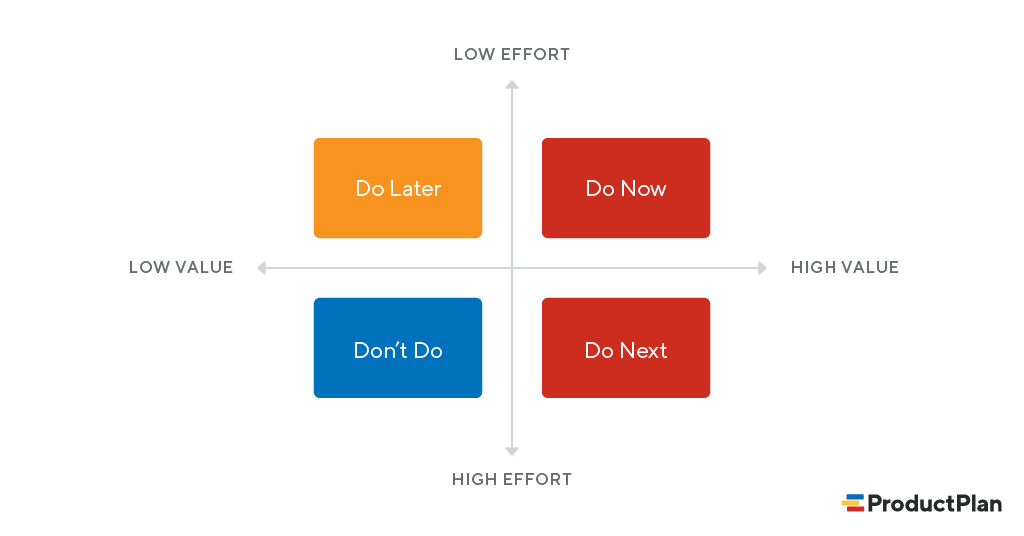
Whipping up a Prototype
So you may be thinking, “why do I need a prototype and a software MVP?” Good question! A prototype is like a rough sketch of your idea, and an MVP is the basic version of your product that can do the main stuff. Prototyping lets you figure out the design and functions, check if the UI & UX make sense, and get early feedback for fine-tuning. Then, you whip up an MVP using that feedback.
Fun fact: Steve Jobs skipped the prototyping stage when making the Apple Lisa. And guess what? It was a disaster and didn’t make any money.
Building and Launching
Once you’ve got your criteria sorted, it’s time to start building your MVP. So, how do you make a minimum viable product that’s gonna be a hit with users and investors? The key is finding a balance to get a slick, streamlined product.
Your MVP shouldn’t be crammed full of features. But it’s gotta be good quality, with bugs squashed as soon as they pop up so it doesn’t crash and burn from the get-go. Plus, it should be user-friendly and solve people’s main problems.
Keep Tweaking (and Listen to the Feedback)
So how do you make an MVP that gets a thumbs up from users? Feedback is crucial. It helps you figure out what other features you might need to add or bugs you need to find. Your early users are kind of like your idea generators and testers rolled into one.
Once you’ve got your MVP, keep tweaking it based on what users are saying. Keep gathering feedback and testing changes. It’s the only way to find out how to create something people actually want and love. The idea is to make a basic software product to test if it fits the market and get meaningful results.
And remember, just because you’ve started developing your MVP doesn’t mean you stop researching. It needs to go hand in hand.
How to Tell You’re Winning After Your MVP is Up and Running
So you’ve got your MVP out there in the wild, but how do you know if it’s gonna be the next big thing? Here’s a few tried-and-true ways to get a feel for how well your MVP is doing:
Word of Mouth
Sure, web traffic is a handy way to see if you’re getting noticed. But let’s not forget the good ol’ fashioned way of finding out what people think: asking them! Start by nailing down the issues your potential customers are wrestling with, then see what they think about your solution.
Engagement
Engagement is like a crystal ball for startups. Not only does it give you a snapshot of your product’s current value, but it’s also a sneak peek into the future. Plus, it’s a great way to fine-tune your user experience based on feedback.
Sign-Up
Sign-ups are like a window into your users’ souls. They show you just how much people are into your product. And hey, they might even turn into cash if you play your cards right.
Better Client Appraisals Based on the Feedback
Downloads and launch rates are like applause for your app. The lighter and snappier your app, the more downloads you’re likely to see.
Percentage of Active Users
Downloads and launch rates aren’t the only game in town when it comes to measuring your MVP’s success. Keeping an eye on user behavior and regularly checking in on your active users’ ratings is essential.
Client Acquisition Cost (CAC)
Knowing how much you’re spending to bring in paying customers is super important. It’s like a reality check for your marketing efforts, letting you know if you’re on track or if you need to switch things up.
CAC = The dough you’re dropping on each channel / The number of customers you’re bringing in through that channel.
Number of Paying Users
Keeping tabs on the average revenue per user (ARPU) and which products are bringing in the bacon is a no-brainer.
ARPU = Total earnings for the day / Number of active users
Client Lifetime Value (CLV)
CLV is all about how long users are sticking around before they uninstall or stop using your app.
CLV = (Profit from a user * Length of app use) – Cost of acquiring that user
Churn Rate
Churn is the rate at which people are saying “bye-bye” to your app. It’s crucial to keep an eye on this.
Churn = Number of users who left in a week or month / Number of users at the start of that week or month
MVP Examples – You know, those Minimum Viable Products
So, here’s the scoop on some famous companies that kicked off with MVPs. These examples really highlight what startups put their energy into when they’re figuring out their main MVP features.
Dropbox MVP
Before Dropbox hit the scene, the co-founder and CEO, Drew Houston, knew there were already a bunch of cloud-storage startups out there. So, he figured, let’s make an MVP using a video to show people how to use the app. This video was a game changer! It reached the right people and racked up views and comments like crazy. Dropbox even got 70k email addresses from potential users in just one day. Talk about a green light!
Amazon MVP
Amazon decided to shake things up by selling books online, which was a big deal for giants like Barnes and Nobles who were still stuck in the old school ‘bricks and mortar’ era. Back in 1994, Amazon’s focus was on selling books at low prices with a simple web design. That was their MVP and it was all they needed to make their mark in the retail world.
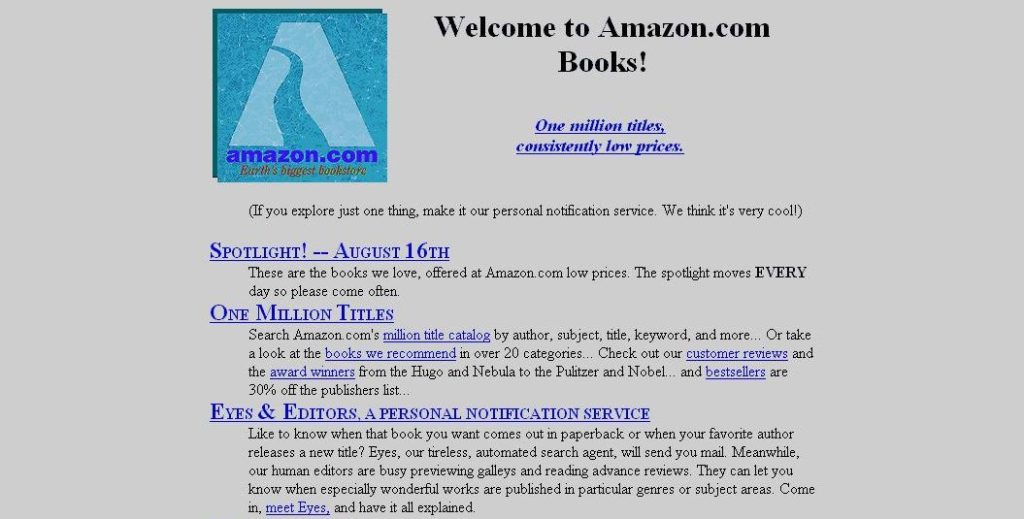
Twitter MVP
Twitter, our favorite bird-themed social media platform, has a pretty unique backstory. After Apple launched iTunes, Odeo, a podcasting platform, hit a rough patch. They started running hackathons to figure out their next move. During one of these hackathons, they came up with the idea to create an SMS-based platform.
Originally, it was known as “twttr” and was just for internal use. But the employees started spending a ton on SMS to post to the platform, so they decided to test it out on the public. In 2006, Twitter was let loose on the world and by the next year, it was a hit. It’s now the second most popular social networking site after Facebook.

Facebook MVP
So, get this, when Facebook first hit the scene, it was a super basic MVP. All it did was link up school and college students with a simple messaging system. The goal? Just to help buddies connect on a social platform and plan hangouts. Facebook started out as a stripped-down MVP, but it was enough to get the job done.
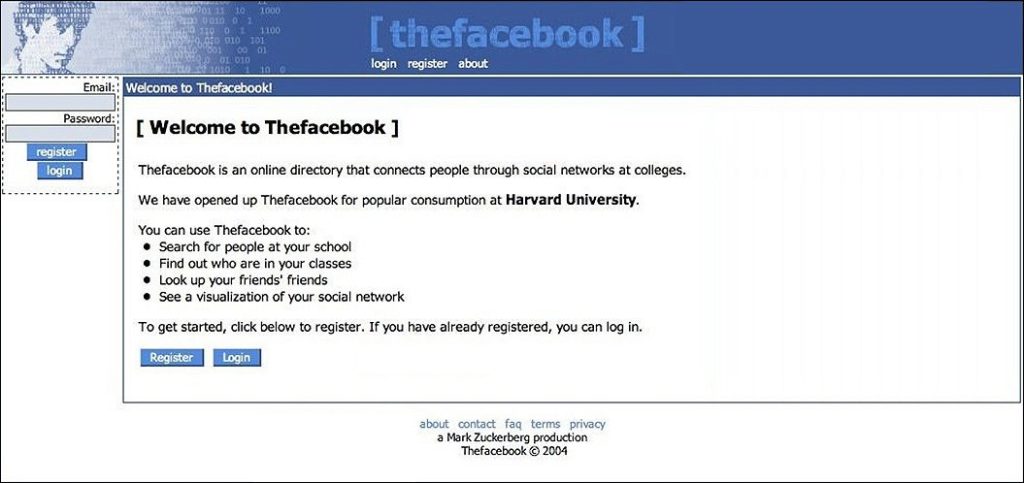
Groupon MVP
Remember those old-school vouchers and discounts? Well, Groupon took that, added a social twist, and boom! They’ve reached new heights. It all started with a WordPress site and some simple PDFs emailed to users. Using an MVP, they tested the waters and it worked! Then they built their voucher system and backend, pushing them towards their big win.
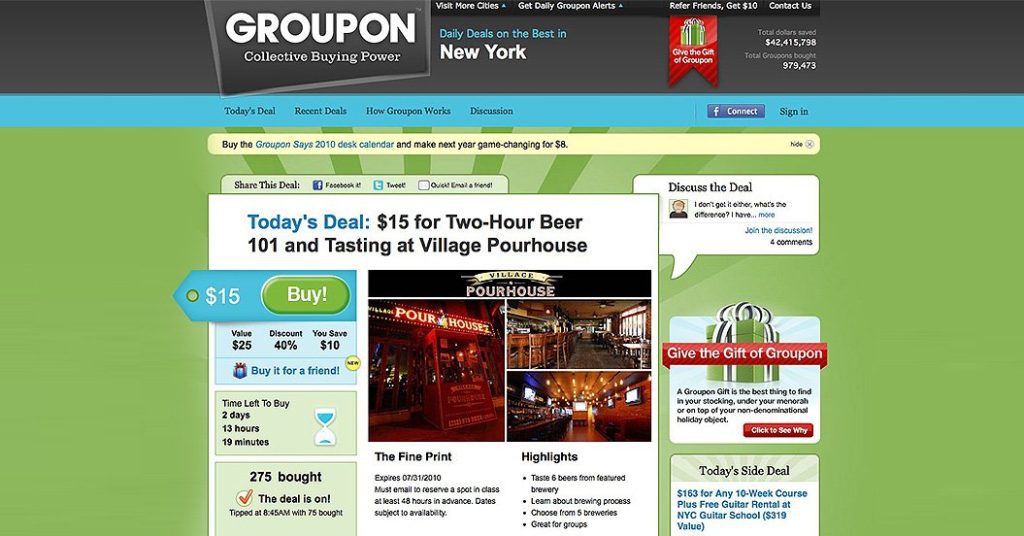
Airbnb MVP
So, this dates back to 2007. Two guys in San Francisco, on a tight budget, had a business idea. A design conference was in town, and they thought, “Why not rent out the top floor of our apartment?” So, they built a basic landing page with pics of their pad. Lo and behold, they got their first three clients during the conference.
They got to know their target audience and validated their concept by interacting with their guests and through the MVP marketplace. Fast forward to today, Airbnb is raking in the dough with a profit of $887 million in the first quarter of 2021. Last year, visitors booked 64.4 million nights and experiences—that’s 13% more than the previous year!
Buffer MVP
Joel Gascoigne had a lightbulb moment when developing Buffer. He didn’t want to waste time on a product that people wouldn’t use. So, instead of jumping straight into product development, he made a webpage with the product description and subscription plans, and shared it on Twitter.
Customers who tried to subscribe got an email saying the product wasn’t available yet but they could follow its development. Smart, right? This MVP approach was a game-changer. It helped Joel connect with his target users and build a subscriber base for the upcoming product. Plus, he got a sense of how much traffic would be willing to pay.
Avoiding Oopsies When You’re Building Your MVP
In this cutthroat digital commerce sphere, Darwin’s ‘Survival of the Fittest’ concept hits the nail on the head. Business bigwigs are all about the MVP development process, giving their product a real-world test run without pouring out too much cash or time.
But, to pull off a killer MVP, it’s crucial to sidestep some development boo-boos that could lead to a colossal business facepalm.
1. Solving the Wrong Problem
Before pouring months of sweat and tears into crafting a product, the first thing to figure out is whether the product is even worth making.
Once a business has pinpointed the headache that their startup is going to soothe, they gotta ask themselves:
- Who are we doing this for?
- What problem is our product gonna solve?
- Is our idea actually a good fix for that problem?
If they aim to please everybody, they’ll end up pleasing nobody. First, find the locks, then start creating the key. The snazziest key ain’t worth squat if it can’t unlock the right door.
Once they’ve nailed down the right peeps to target, and if answers to the next two questions are an emphatic ‘Oh yeah’, then they’ve got their problem and solution nicely lined up. Now it’s time to put their idea through the wringer.
2. Bypassing the Prototype Stage
Prototyping is the conversation you have with your ideas. – Tom Wujec
Picture building a car without a blueprint. Kinda impossible, right? Jumping headlong into the development process without laying out the groundwork is equally tricky.
A crucial part of turning an idea into a tangible product or service is the transformation from a unique concept to a fully operational thing. Nestled between the idea and the finished product is the prototype, which zeros in on the ‘How’ aspect of the product.
Think of prototyping as making an MVP for your MVP: not quite the complete package, but a taste of what the user experience of the Minimum Viable Product would look like.
The ideal prototype should be of Goldilocks quality. If the quality is too low, people won’t believe the prototype is a real product. If the quality is too high, you’ll be working all night, and you won’t finish. You need Goldilocks quality. Not too high, not too low, but just right. – Daniel Burka, Google Ventures Design Partner</span
3. Oops, You’re Chatting to the Wrong Crowd
Ever wonder why some products flop? They just didn’t hit the sweet spot for customers better than the other options out there. – Dan Olsen
So, you’ve got your MVP prototype all set. Now’s the fun part—testing it out. You need feedback from your peeps, the ones who’re actually gonna use your product. Remember, not everyone is your target user.
Don’t rope in your friends or family for this unless they’re your potential customers. You want to avoid any off-track feedback that might make you chuck your product/service for the wrong reasons.
4. Not Mixing Things Up Enough
You’ve made an MVP, nailed down a problem, and that’s awesome. But you also need to think up some alternative solutions: how can you sell something that people can buy without breaking the bank?
This is where research comes in. Figure out who your product is for, what situation your product can help with, and how your solution stacks up against other options out there. This deep dive will help you set priorities and build an MVP that’s well-thought-out and sustainable.
But don’t forget to chat with your customers, sketch out ideas, have brainstorming sessions, and all that jazz during your research. If you skip this step, your product might take a hit.
5. Not Enough Feedback
Want to build an MVP that’s a hit with customers? You gotta get their take on things. You won’t know what your users need or what’s bugging them unless you ask and get some answers. What should you keep in mind while collecting customer feedback?
- Your solution isn’t gonna be a miracle cure-all. So, when you’re working on it, think about how to create an MVP for a specific market segment.
- Don’t be shy about asking for early customer feedback. But also, don’t bombard them with surveys and questionnaires—you don’t want to annoy them.
Struggling to strike a balance between these two while creating your MVP and gathering feedback? Try splitting your customers into smaller focus groups and asking each group different questions. And don’t forget to show some love to your users for their feedback on your MVP implementation. How about a month (or more) of free use of your app?
6. Getting Your Priorities All Mixed Up
Before you hit the brakes on your car, you need to know why and how. Same goes for your MVP. If you don’t have clear goals, or if you’re focusing on the wrong problem, you could end up with a product that doesn’t resonate with customers or doesn’t pass the concept test.
To avoid this, get crystal clear on your product concept first. This will help you understand the problem you’re trying to solve with your MVP and what kind of solution is needed.
When you’re figuring out the details of your future solution, ask yourself:
- How big a deal is your problem?
- How is the market currently handling it?
- What features will make your app stand out from the crowd?
Before We Finish up, Check This Out
You might want to watch this video from Micheal Seibel:
Give it a watch if:
- You’ve not got an MVP yet
- You’re scratching your head about what features should be in your MVP
- You’re building an MVP, but no one’s using it yet
- Your MVP is taking longer to launch than you thought it would
And That’s a Wrap!
Even though it seems like a mountain to climb, an MVP is really just the first step on your startup journey. It helps you test out your idea quickly and without breaking the bank, get real feedback from actual users, and show stakeholders and investors that your idea has legs.
We’ve walked you through how to build an MVP and why it’s so important to define the problem, do your market research, prototype, and collect feedback.
That’s it for our “How to build a minimum viable product” guide. We hope it helps you on your journey!
Ready to Launch a Digital Business and Earn Money Online? Let’s Do This!
Introducing the ultimate resource, The Digital Business Mastery Bundle! Packed with tools, ideas, guides, checklists, roadmaps, and courses, everything you need to conquer the online revenue world is ready.
This power-packed bundle equips you with the knowledge and strategies to generate online income, potentially adding an impressive $1,000 to $100,000 to your revenue every month.
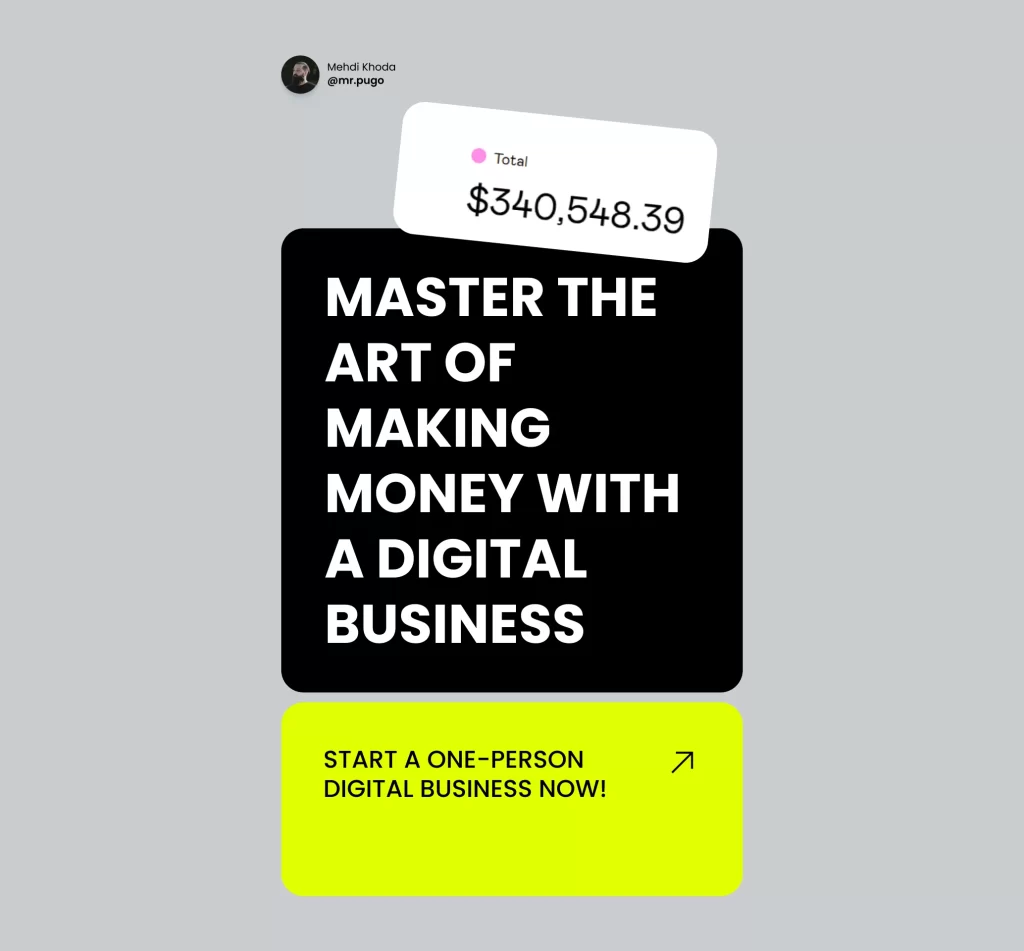
Running a business currently? Impressive!
You’ll be thrilled to know that I’ve developed all the essential tools to not just run your business, but drive it towards unprecedented success.
We’re talking comprehensive content management, innovative social media strategies, engaging landings, exceptional products, effective marketing, insightful analysis, strategic planning, and so much more. It’s all covered!
— Explore our exceptional business templates.
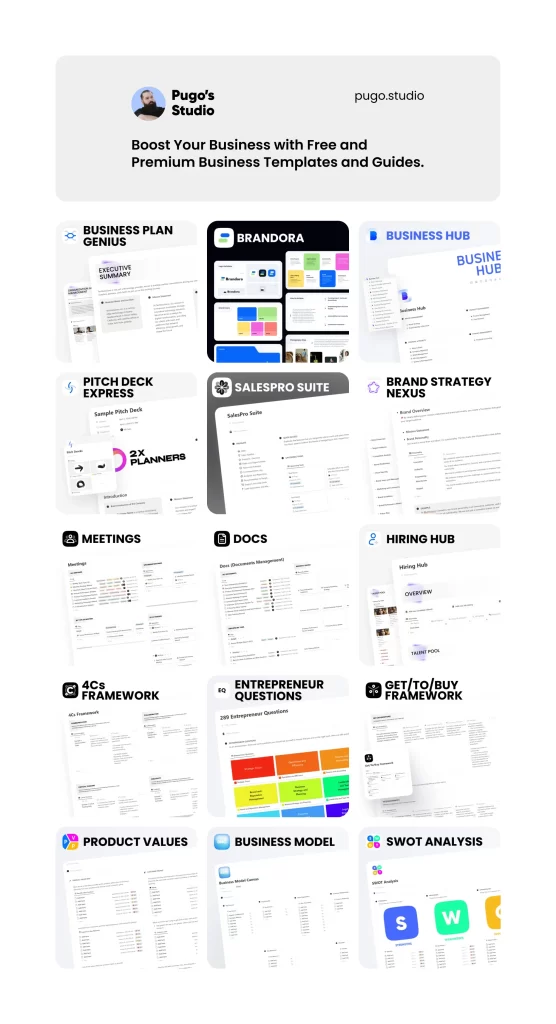

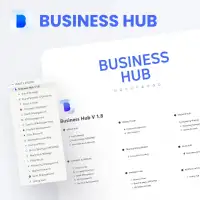
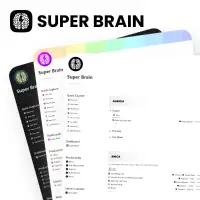

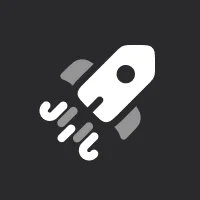






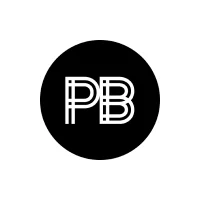
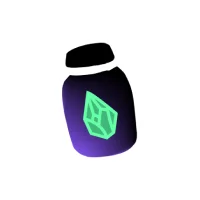





One thought on “How to build a minimum viable product (MVP) – A step-by-step guide”